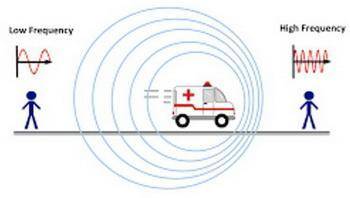
Biology, 05.08.2019 02:10 sassyparker1216
When the source of a wave is moving relative to an observer of the wave, which of the following is true?
o observers ahead of the wave observe an apparent increase in wave frequency
observers both ahead of and behind the wave notice an increase in frequency
observers in all directions notice a decrease in wave frequency
observers behind the wave observe lower wavelengths and higher frequency

Answers: 3


Other questions on the subject: Biology

Biology, 21.06.2019 22:00, ayeasley7777
Hey me with this one❤❤❤❤ every organism needs food. does a cell also need it? explain very briefly.
Answers: 2

Biology, 22.06.2019 00:00, Queenhagar
Theories basic to all of the life sciences include the germ theory of disease. theory of evolution by natural selection. o two of these answers are correct none of these answers are correct o cell theory.
Answers: 1

Biology, 22.06.2019 01:00, Samuelgamboe
The sketch shows a rynchosaur, an extinct animal that is known only from fossils. there has been much debate about the classification of these creatures. some scientists suggest that they belong with primitive amphibians, and some think they are related to snakes and lizards. the data equally support both cases. which statement best explains how to draw a cladogram that includes the rynchosaur? draw the cladogram for amphibians. draw the cladogram for reptiles. draw two cladograms, both showing the traits, and leave it as a hypothesis. draw two cladograms, both showing the traits, and have scientists vote
Answers: 2

Biology, 22.06.2019 04:00, zegangke1651
Will mark brainliest i only need the ! 1.use ten beads and a centromere of one color to construct the long chromosome. use ten beads and a centromere of a second color to construct the second chromosome in the long pair. make a drawing of the chromosomes in the space below. 2. for the second pair of chromosomes, use only five beads. 3. now model the replication of the chromosomes. make a drawing of your model in the space below. part b: meiosis i during meiosis i, the cell divides into two diploid daughter cells. 4. pair up the chromosomes to form tetrads. use the longer tetrad to model crossing-over. make a drawing of the tetrads in the space below. 5. line up the tetrads across the center of your “cell.” then model what happens to the chromosomes during anaphase i. 6. divide the cell into two daughter cells. use the space below to make a drawing of the result. part c: meiosis ii during meiosis ii, the daughter cells divide again. 7. line up the chromosomes at the center of the first cell, one above the other. separate the chromatids in each chromosome and move them to opposite sides of the cell. 8. repeat step 7 for the second cell. 9. divide each cell into two daughter cells. use the space below to make a drawing of the four haploid cells
Answers: 1
You know the right answer?
When the source of a wave is moving relative to an observer of the wave, which of the following is t...
Questions in other subjects:

History, 08.01.2020 23:31




History, 08.01.2020 23:31

Mathematics, 08.01.2020 23:31


Computers and Technology, 08.01.2020 23:31





